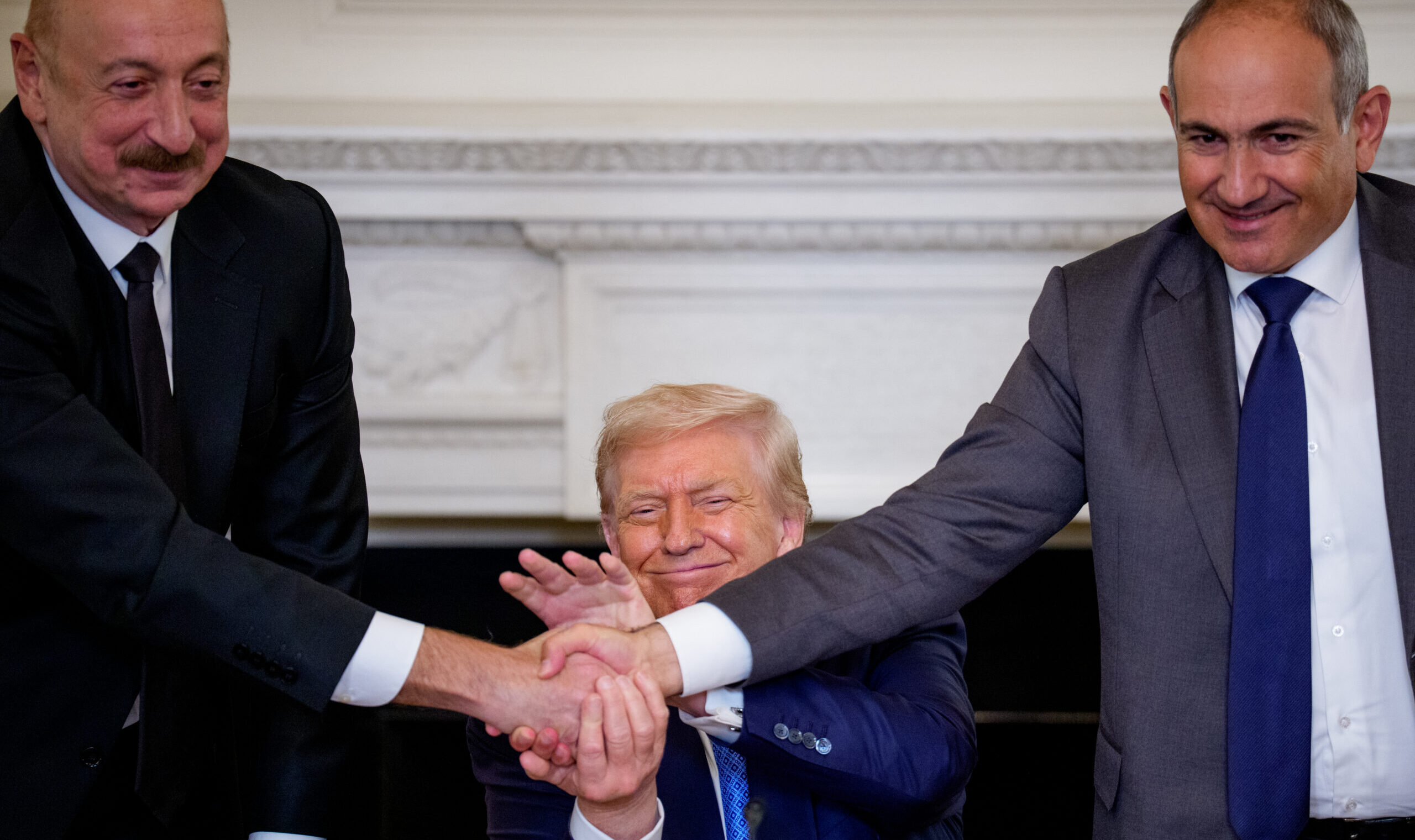The Armenia–Azerbaijan peace summit can be claimed as the most significant achievement of President Donald Trump’s second-term foreign policy. As his administration constantly reminds us, Trump, a man chasing the ever-elusive Nobel Peace Prize, is the “peace president”—so much so that he is seeking peace in the badlands of Eastern Europe/Western Asia, where three Huntingtonian civilizational blocs (Western, Islamic, and Orthodox) clash, and in the chronically bloody Middle East. The admin also reminds us that he has settled wars between Thailand and Cambodia (true), India and Pakistan (debatable), and a variety of African ethnic groups (partially true).
But there is no denying that this one is different. Armenia and Azerbaijan were locked in what seemed to be an intractable conflict, but those countries’ respective heads of state sat with Trump, grinning and signing a paper that made the U.S. a quasi-guarantor of amity in the region—albeit with a heavy dose of American corporate involvement at a junction on the historic trade route that might once again alter the balance of power in that theater.
The American-brokered and -guaranteed peace hands over a 20-mile corridor to be developed by the U.S. “The Trump Route for International Peace and Prosperity,” otherwise known in Azerbaijan as the “Zangezur corridor” and in Armenia as “Syunik road,” links Azerbaijan with Turkey through Armenia. It will be operated ostensibly by an American company, thus guaranteeing peace and profit. The route will restart a route historically used by Armenian merchants connecting Turkey (and by virtue, Europe) with Asia without having to cross through either Iran or Russia.
The idea is that, once this route is established, it would allow Turkey to reopen its border with Armenia, closed since the 1993 Armenian–Azeri conflict. Turkey’s President Recep Tayyip Erdoğan was instrumental in convincing Trump to make this deal, as well as helping bring the Armenian and Azerbaijani sides together. Both Moscow and Tehran are circumspect about the project, but powerless to do anything about it. They do, however, read the writing on the wall. This deal, while bestowing profit to America, also strengthens Turkish regional preponderance over its historic rivals of Russia and Persia.
One of the first references to Armenian commerce connecting Asia and Europe through this route is found in Marco Polo’s 13th-century chronicles; Venetian merchants like Polo were trying out new trade routes and partners connecting India to Italy, seeking Asian wealth, silk, ivory, jewels, rugs and spices. The route only gained even more importance after Mehmed conquered Constantinople, establishing Turkish supremacy around the Bosporus and making the Ottomans guarantors of order by both land and the sea. The Ottomans, in turn, settled many Armenians from eastern Turkey and Crimea in Istanbul. Armenian migration and trade continued to gain momentum as the Ottomans mellowed and became more and more (for lack of better word) multicultural throughout the 16th century.
Subscribe Today
Get daily emails in your inbox
The pressure of imperialism naturally liberalized trade routes and encouraged more cultural dilution. There was another geopolitical angle. The Ottomans had to be good to the traders to demonstrate that they were better than the Safavid Persian and Russian Empires, both of which were rivals to Ottoman power. In one of the earliest examples of borderless trade, this network connected Surat, Madras, Calcutta, Constantinople, Izmir, Moscow, Krakov, Lviv, Venice, and Amsterdam; all over it were significant Armenian and Turkish diasporas and cultural imprints. The total volume of goods circulated through this network was immense, and was eclipsed only by the eventual rise of the British imperial sea routes through Aden and Suez.
The current dynamic echoes the past, with the rapid shift of balance of power in the Caucasus towards Turkey and the West, as opposed to any Russian- or Iranian-led bloc. As Russia got busy with Ukraine, Azerbaijan decisively routed Armenia with Turkish backing and reconquered the disputed Nagorno-Karabakh region. Between 2020 and 2023, Turkish drones changed the battlescape in Armenia and Syria (and bogged down Russia in Ukraine). More importantly, Armenia realized that there’s no Russian or Iranian cavalry coming to save them, so they have effectively discarded its deep-rooted alliance with Russia and rivalry with Turkey.
The discipline of international relations is all about power, where neither ethnicity nor religion are so important. This new, hegemonic peace will have unpalatable lessons for all sides and prompt a reevaluation within liberal history and the academy. As every generation before us has known, conquest is at times a more stable guarantor of hegemonic peace than continuous and futile war to reimpose a broken balance; small powers without a great power backing will do better to accommodate a regional balance than to rebel against the impending order. Sometimes hard power brings about a greater imperial equilibrium for all actors involved, often overtaking divisive forces of ideology, or religious and ethnic kinship.
